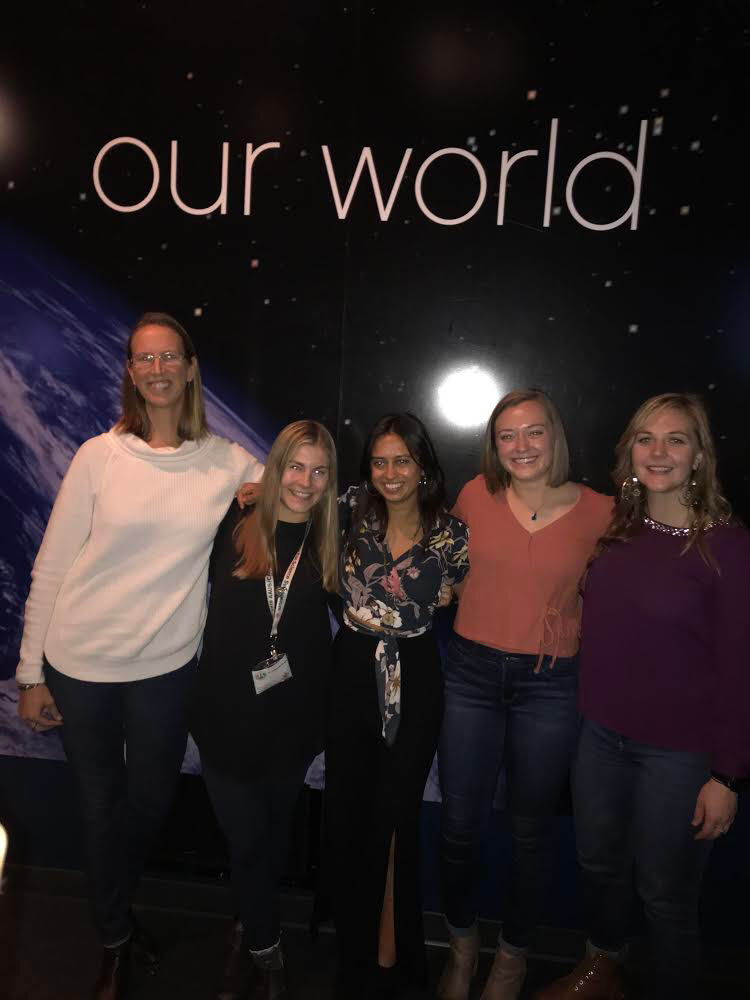In September and October, my scholarship journey took me to the stunning regions of British Columbia and Alaska, where I have immersed myself in a diverse range of experiences. And I must admit, I totally fell in love with the nature in both these regions, and especially the cold water diving there!
First, I flew to Vancouver, where I visited the Vancouver Aquarium to get to know their Head Vet Dr. Martin Haulena. At the Aquarium, I was able to participate in an examination of the feet of the Aquarium´s resident penguins and learned how to conduct a diagnostic Fish Necropsy consisting of swaps of their skin, gill and fin clips to check for parasites, and the dissection of the inner organs.
In the Aquarium´s Marine Mammal Rescue Centre, volunteers and Veterinary Technicians care for the many Harbour Seal pups until they have recovered from their injuries or malnourishment, and until they graduate from “Fish School”, a process through which they are slowly introduced to eating solid food and finally are able to compete in a group of Seals for fish, just like in the wild. Then, after a few weeks of rehabilitation, they are ready to be released back in the place where they were rescued from, and I was lucky enough to help with the release of one group of seals in Howe Sound – a very happy feeling watching the successfully rehabilitated juvenile seals hop back into their natural habitat.
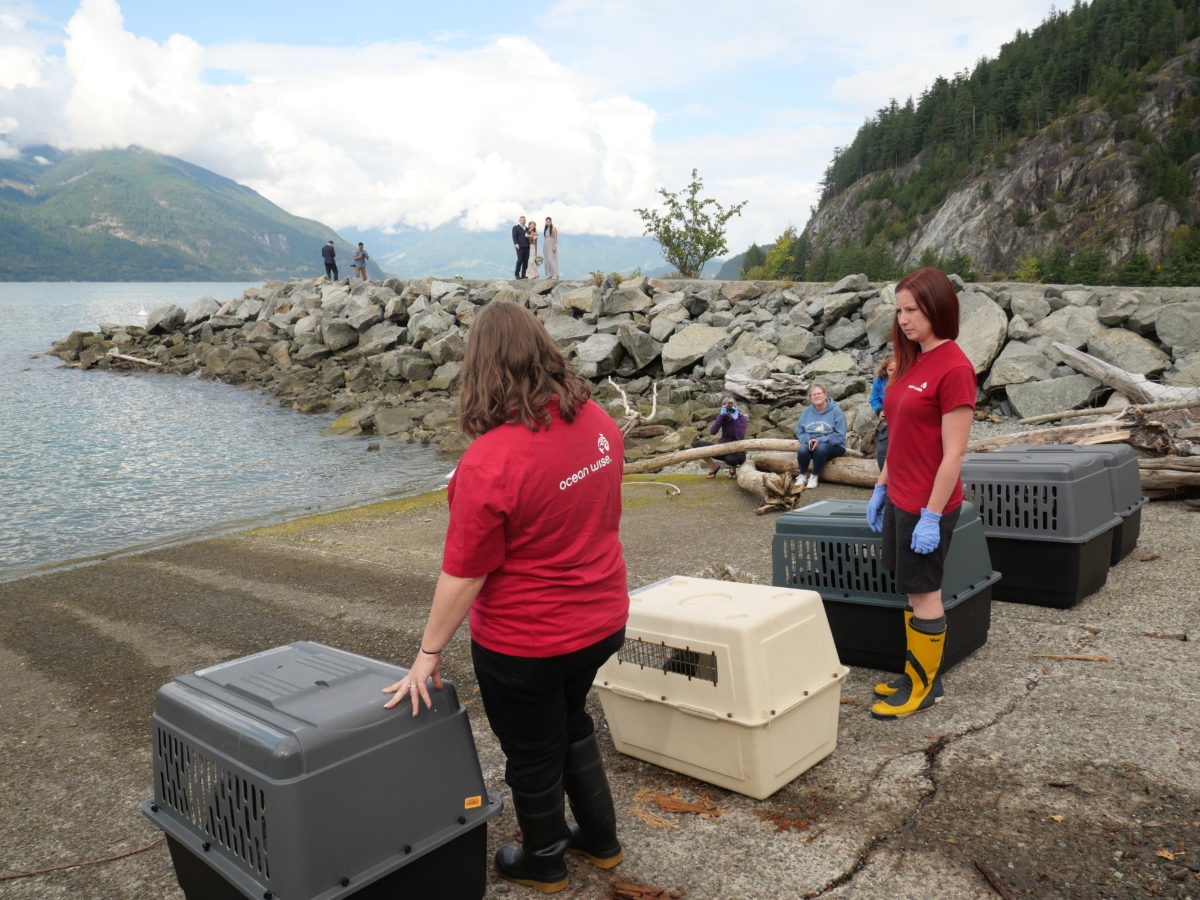
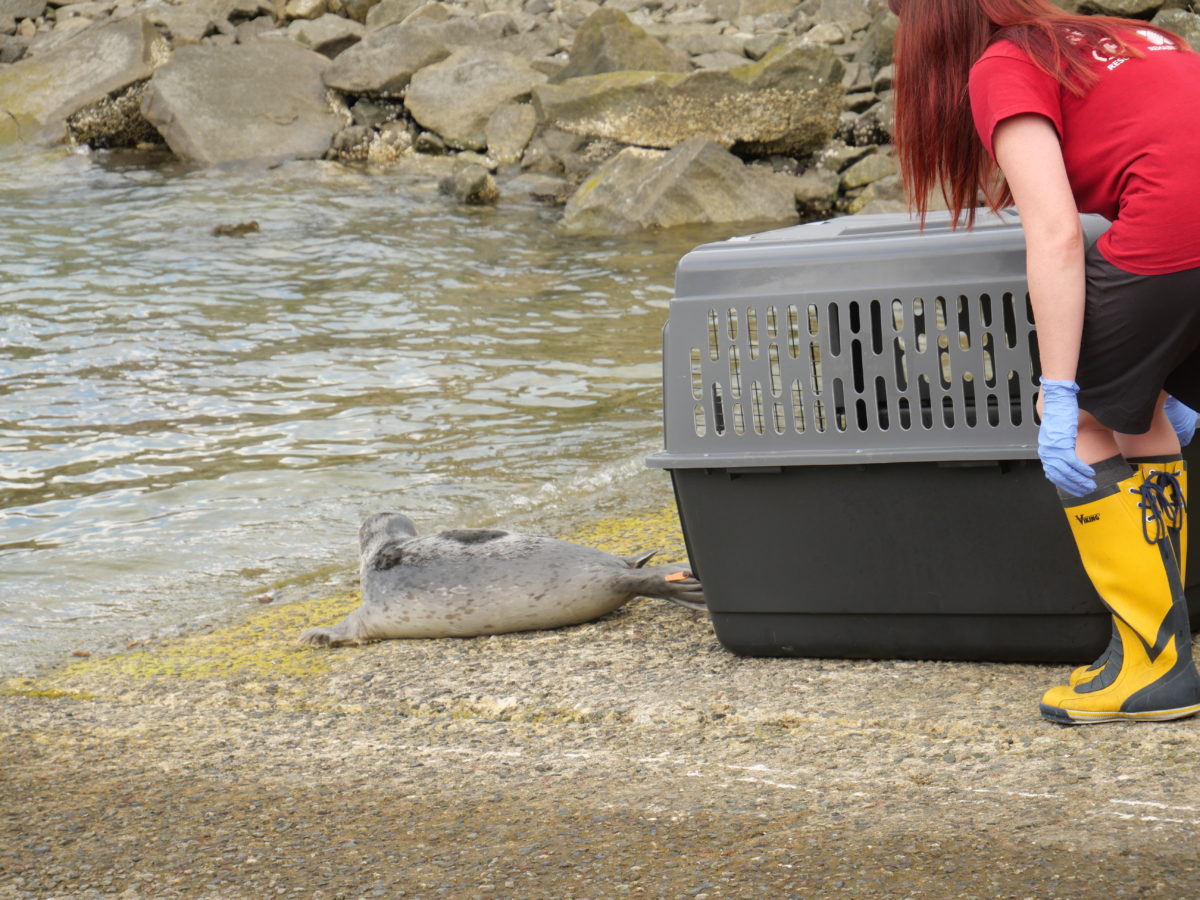
I also visited Phil Nuyten at Nuytco Research, who are making both many different submersible Vehicles as well as their famous Exosuits, a metal suit that a person can work in under atmospheric pressure, even in very great depth, making working in these depths a whole lot safer. And they even let me hop into one! Phil Nuytten himself is a very encouraging person, and speaking with him about his past was incredibly inspiring, as he has proved many times in his life, especially with his idea of the Exosuits, that whatever you believe in and what your imagination and goal is, that you can achieve it if you are determined and work towards it.
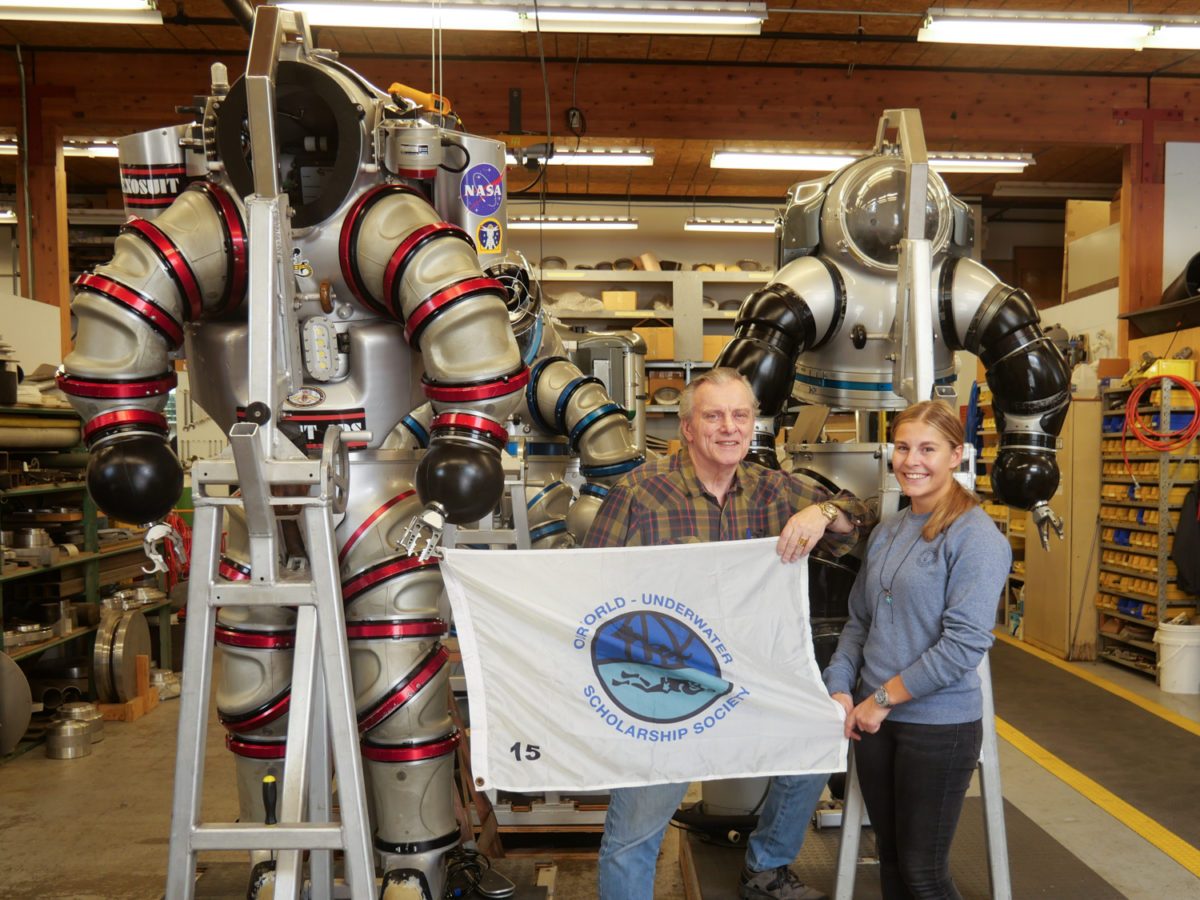
I also visited Shearwater Research, watched how dive computers are serviced, and learned about the history of Shearwater dive computers.
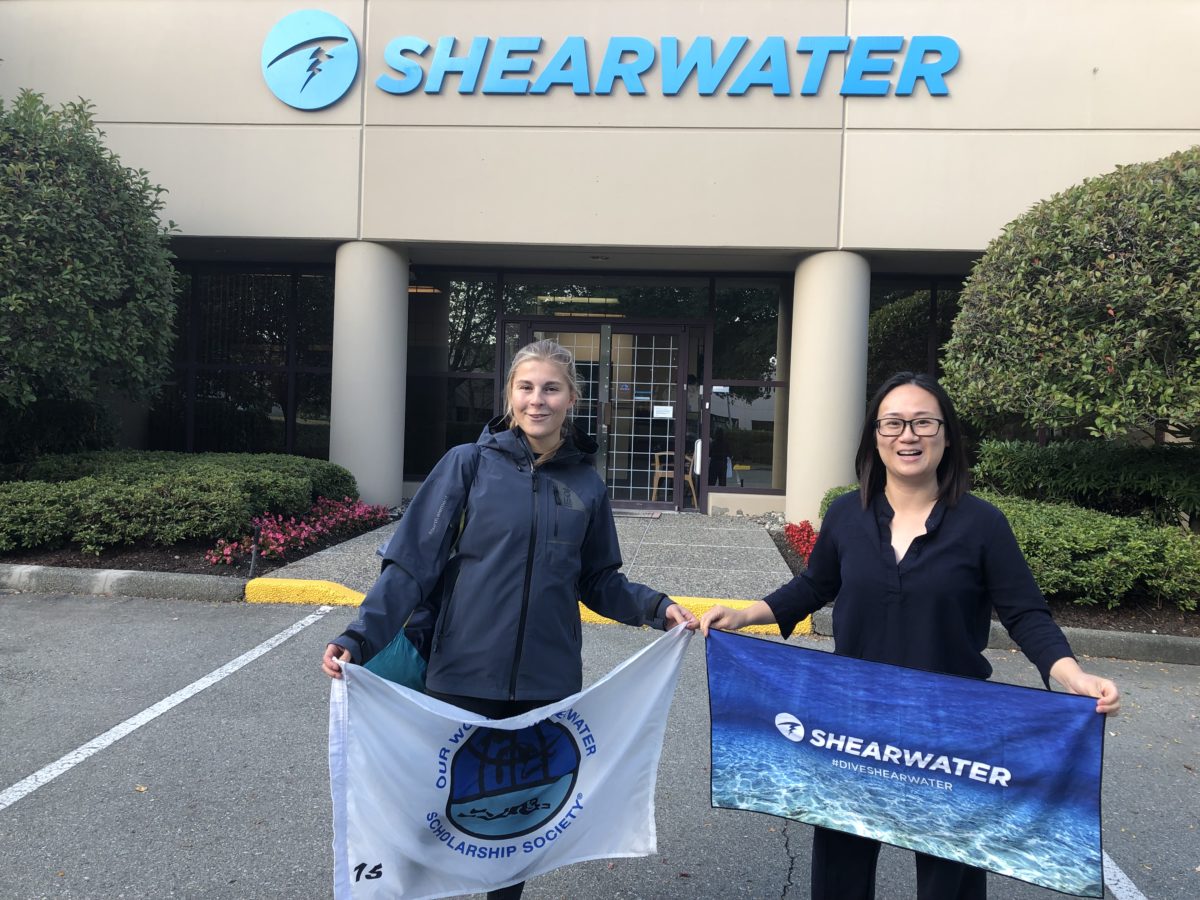
I was very impressed by each of these institutions, who are all progressing the underwater world in such a different way, and I really enjoyed learning about each and every one of them.
Next, I made my way over to Vancouver Island, where I visited seaproof.tv to learn about Underwater Minimentary Production, and I also met with Maxwel Hohn to speak about Underwater Videography techniques. I was then lucky enough to join Maxwel on a very unique British Columbian experience: We filmed and photographed the Salmon, who are travelling up the Rivers at this time of the year to spawn.
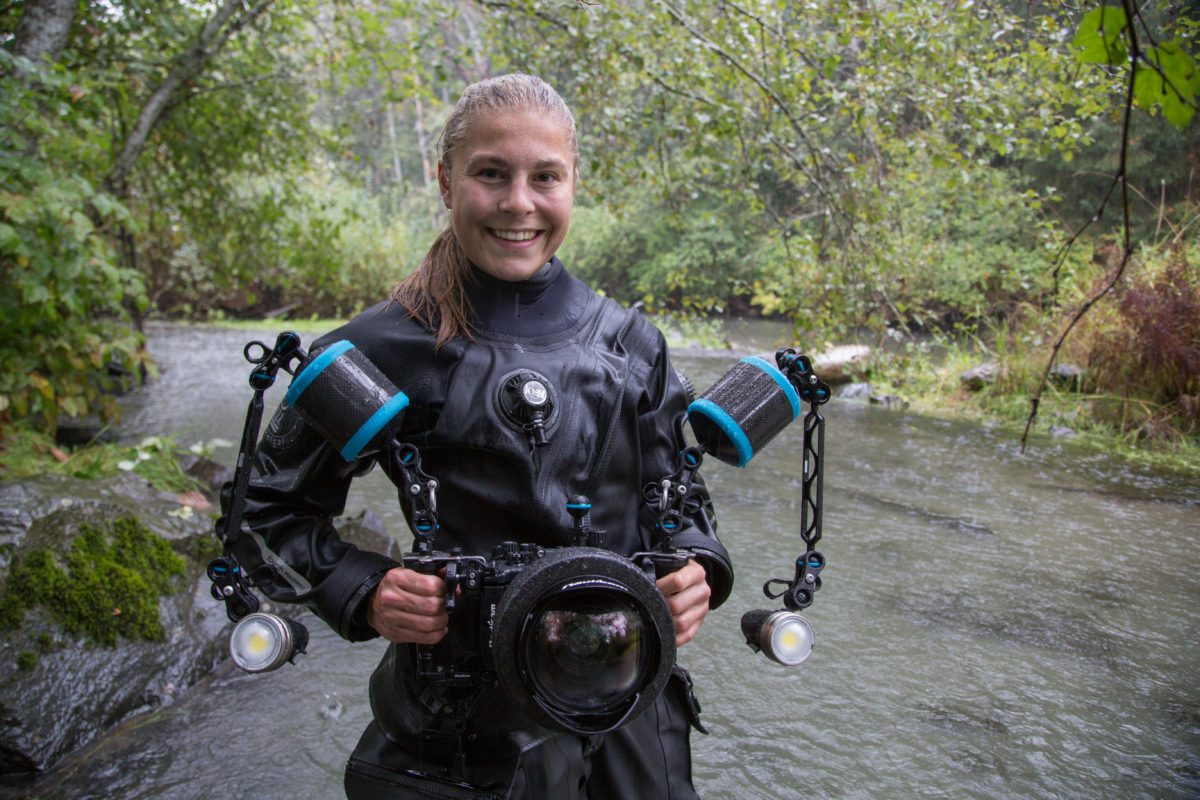
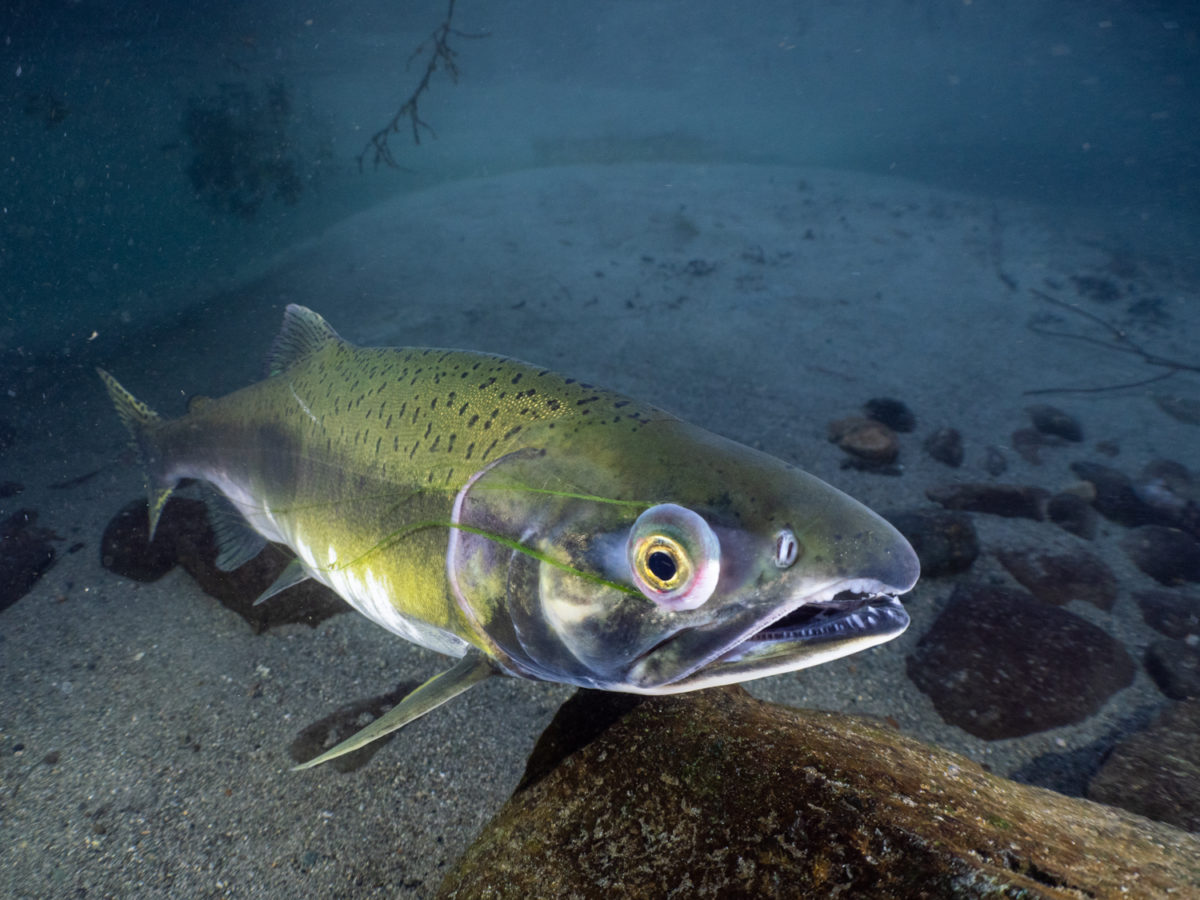
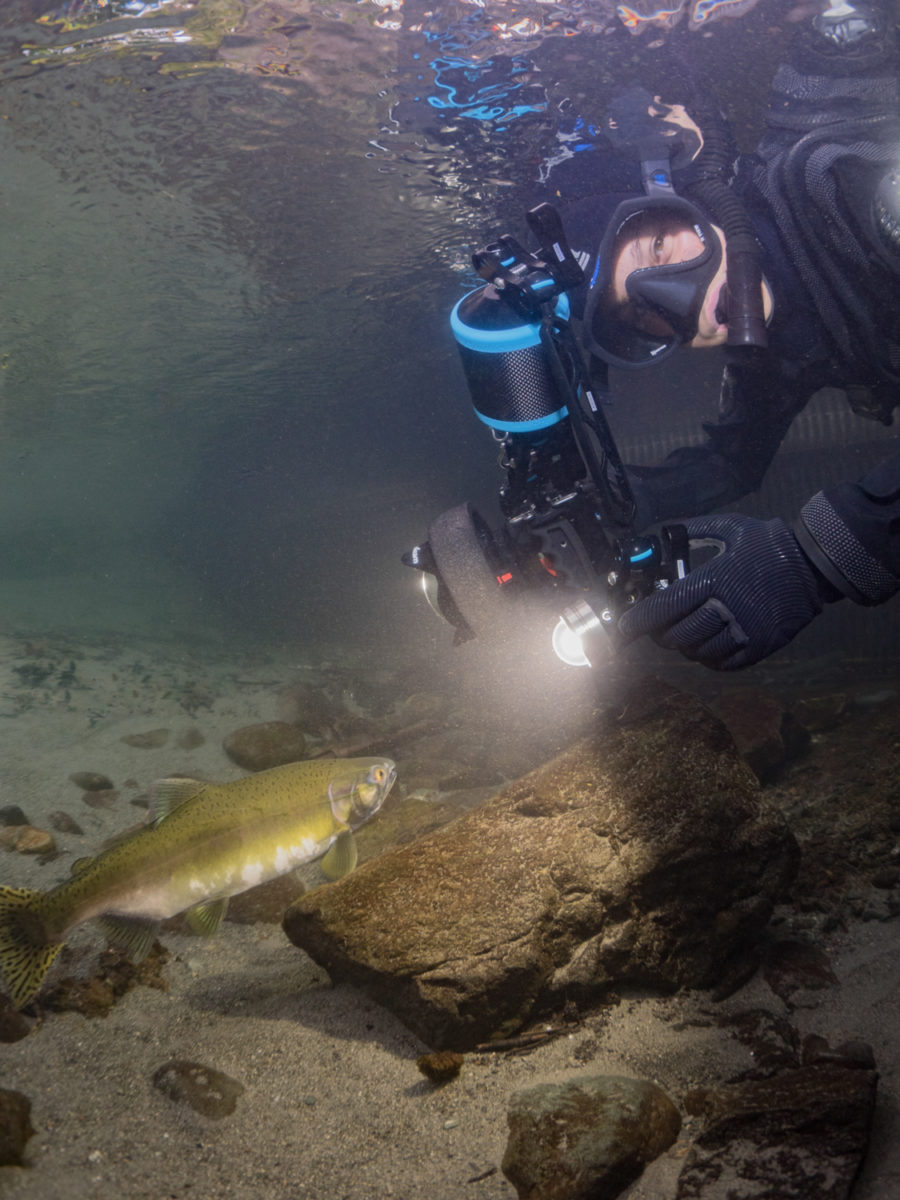
Still on the island, I spoke with Dive Safe International about Commercial Diving, and I even got to try myself out on a tethered dive in a Kirby Morgan diver helmet, which was great fun and a very interesting experience!
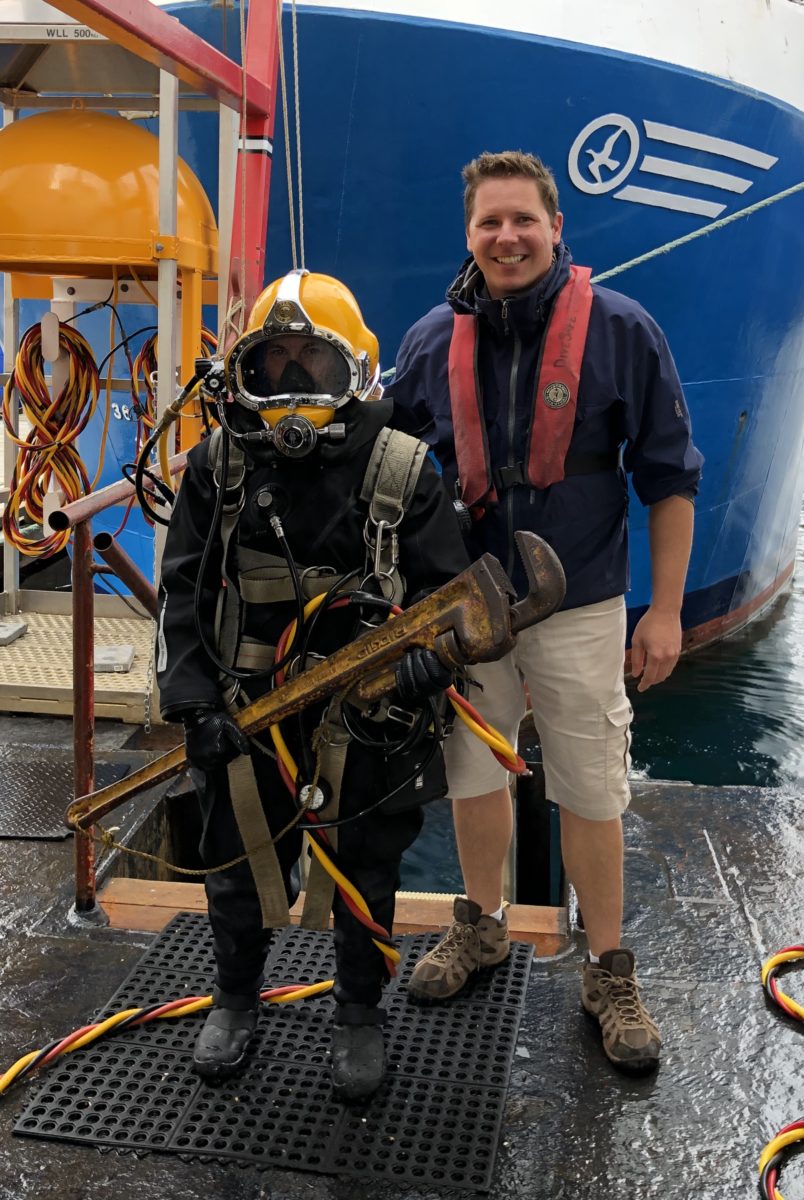
Another day, I visited the Royal Canadian Mounted Police´s Dive and Boat Unit, who provide police services for the whole very large and inaccessible British Columbian coastline and the many First Nations Tribes that live on it. And it was great to learn about their impressive Divers Training Programme, too!
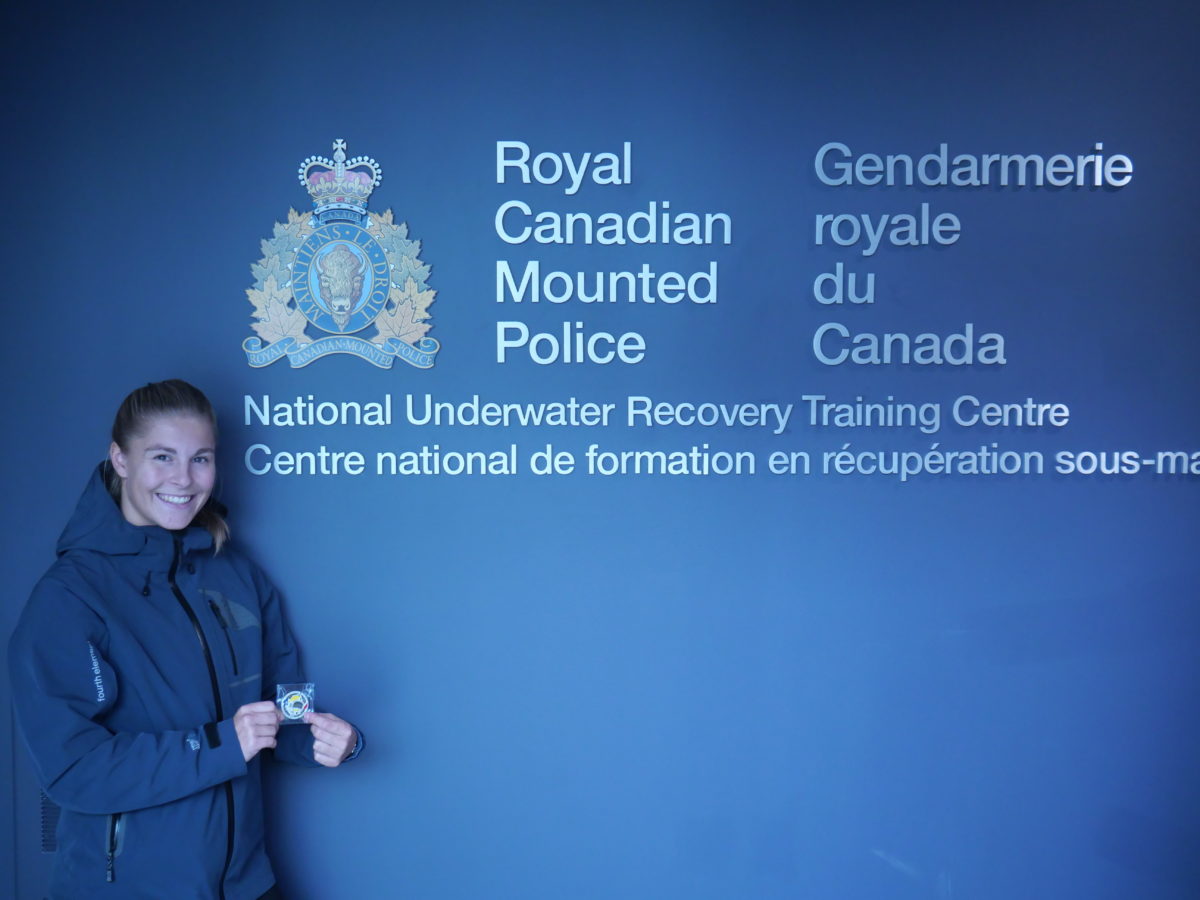
Another highlight for me was to experience Orcas, Pacific White-sided dolphins, harbour porpoises and Humpback Whales display incredible social behaviours, splashing on the water with their pectoral fins and breaching, with Big Animal Encounters in the beautiful sounds around the Discovery Islands.
And, of course, last but not least, I got to dive some amazing dive sites around Bowen Island and Whytecliff Park near Vancouver, and I enjoyed the emerald green waters and cold water diving here tremendously! Beautiful Plumose anemones, glass sponges, Giant Pacific Octopus, Rockfish, Cod, big King crabs, and so much more colourful marine species, the biodiversity here just blew my mind.
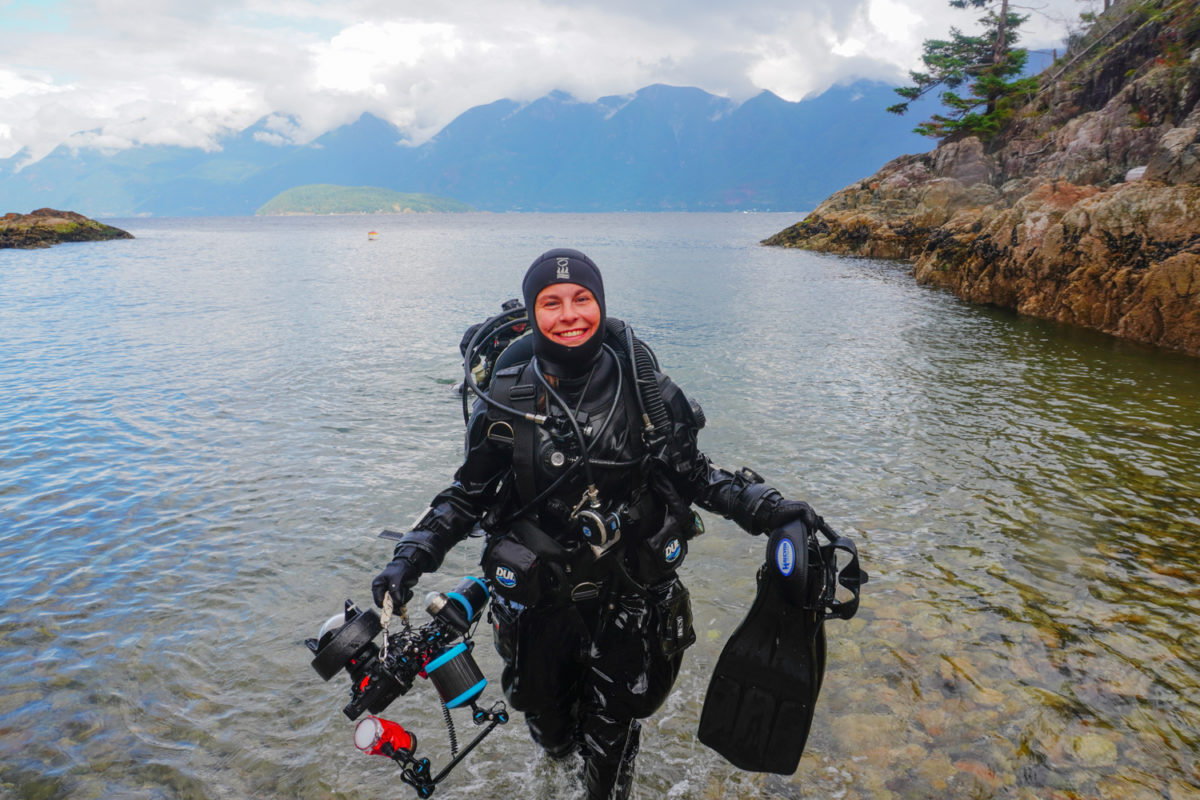
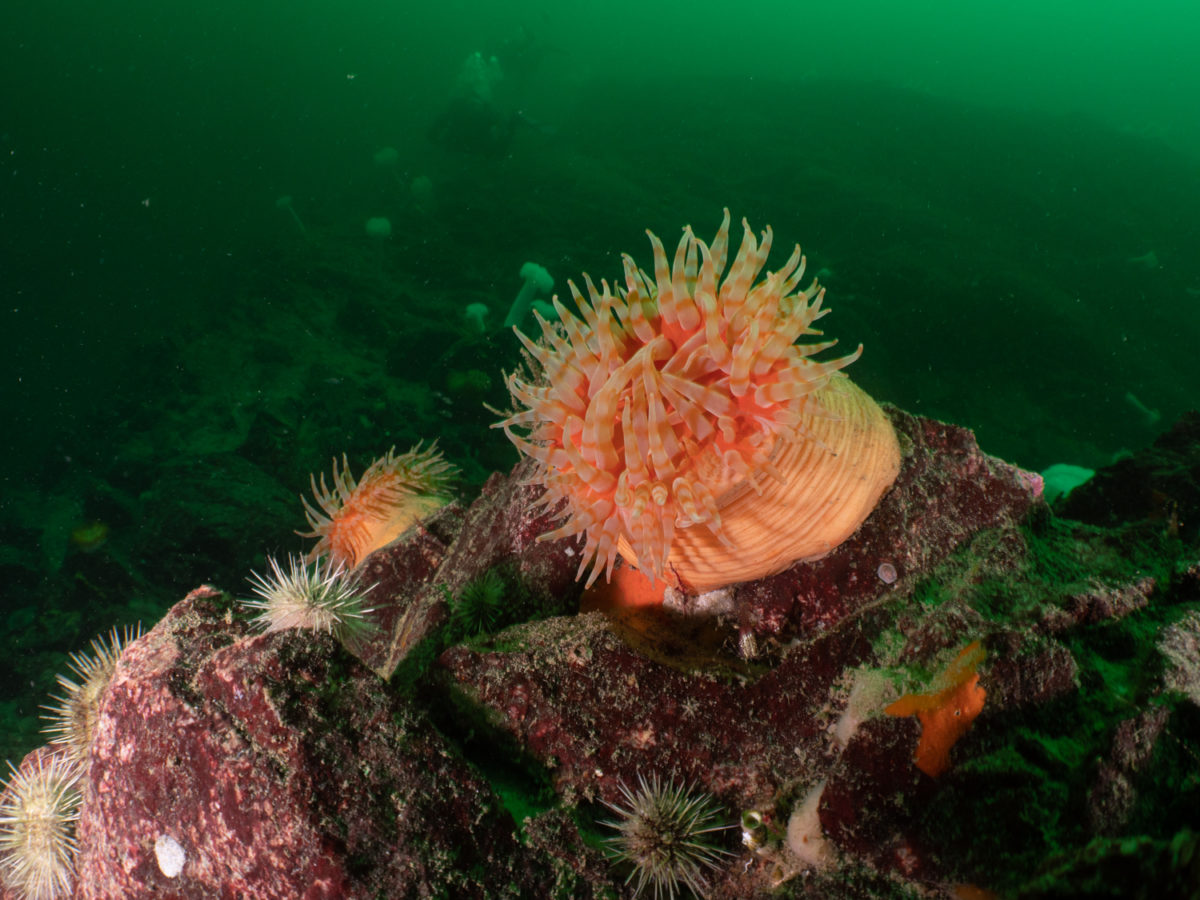
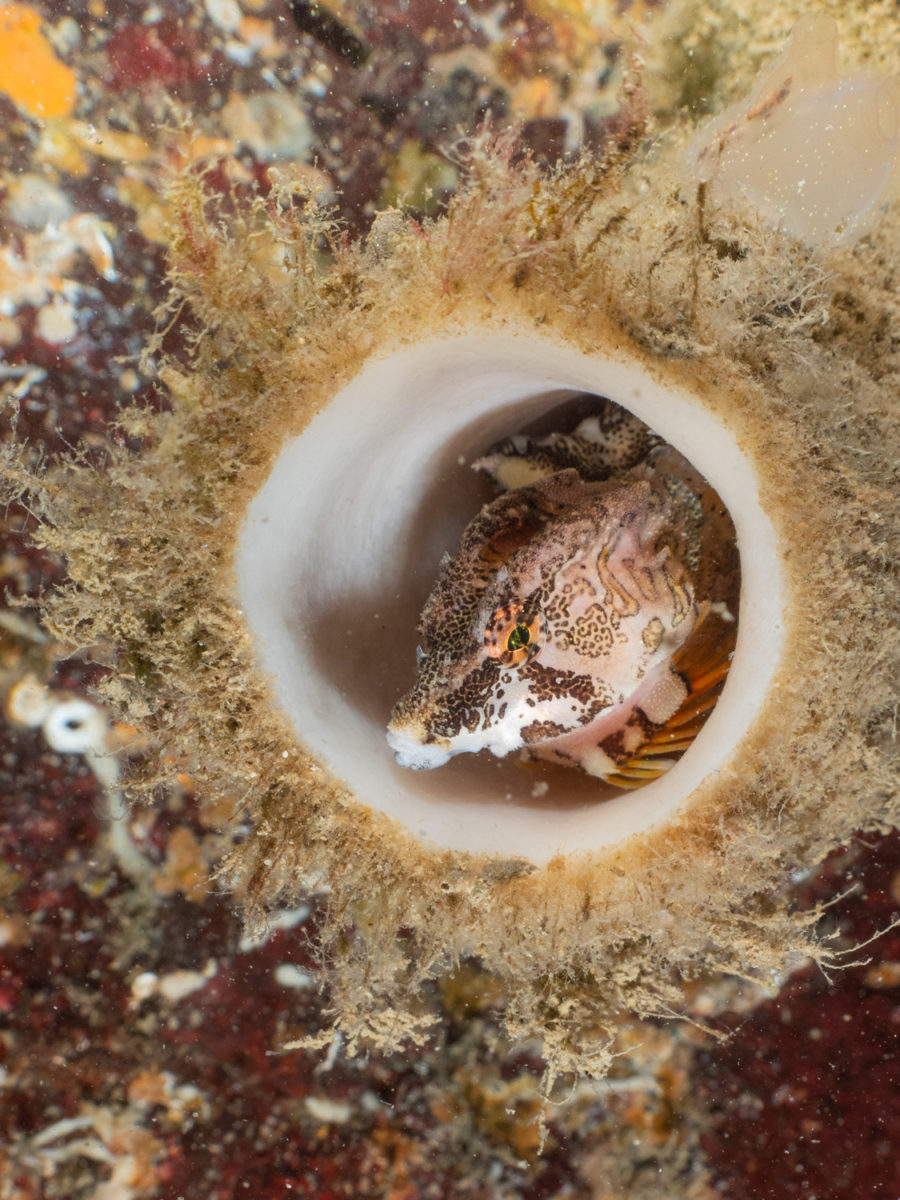
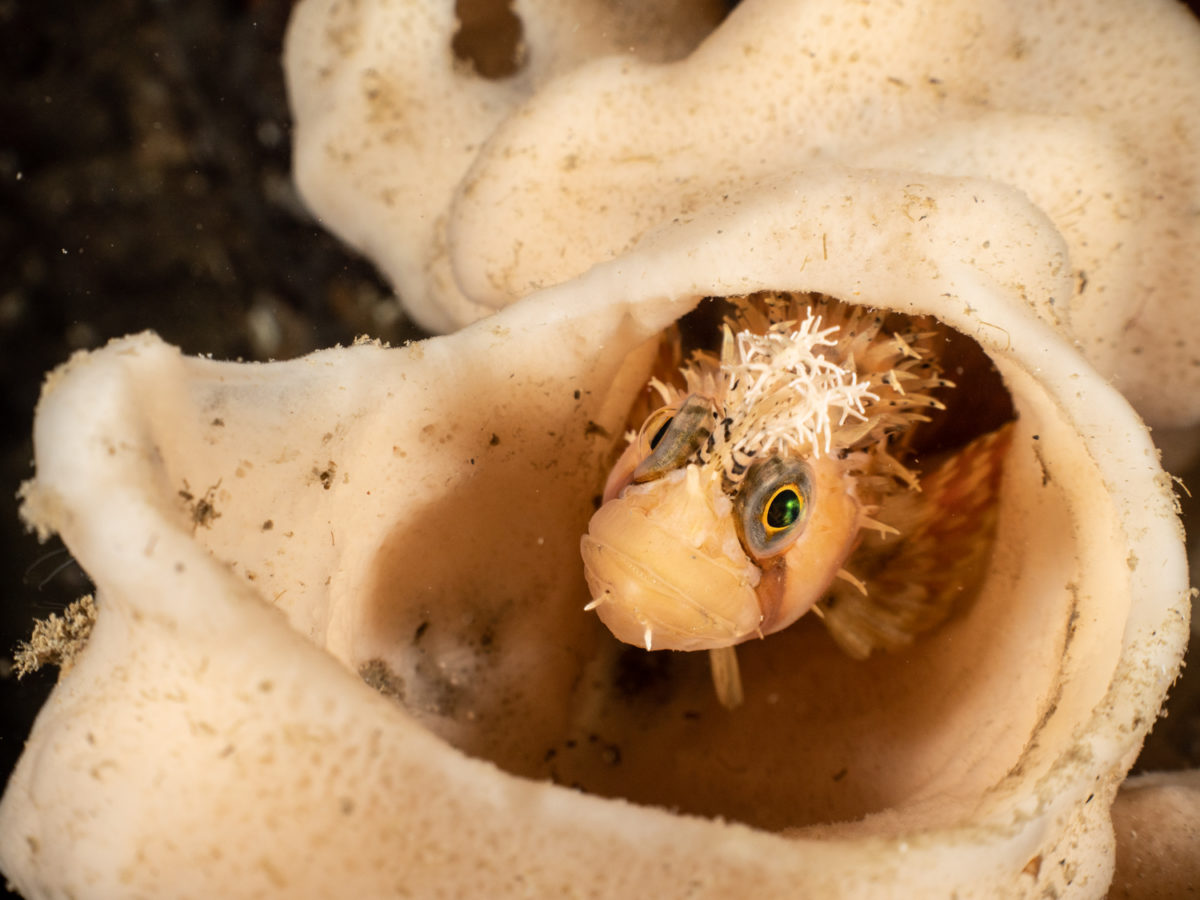
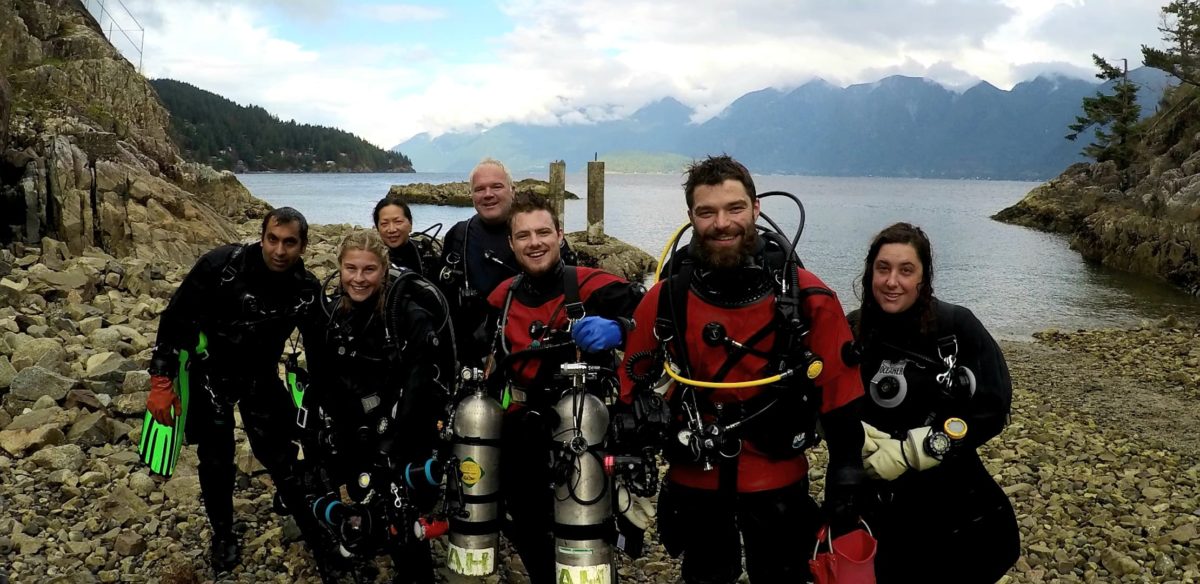
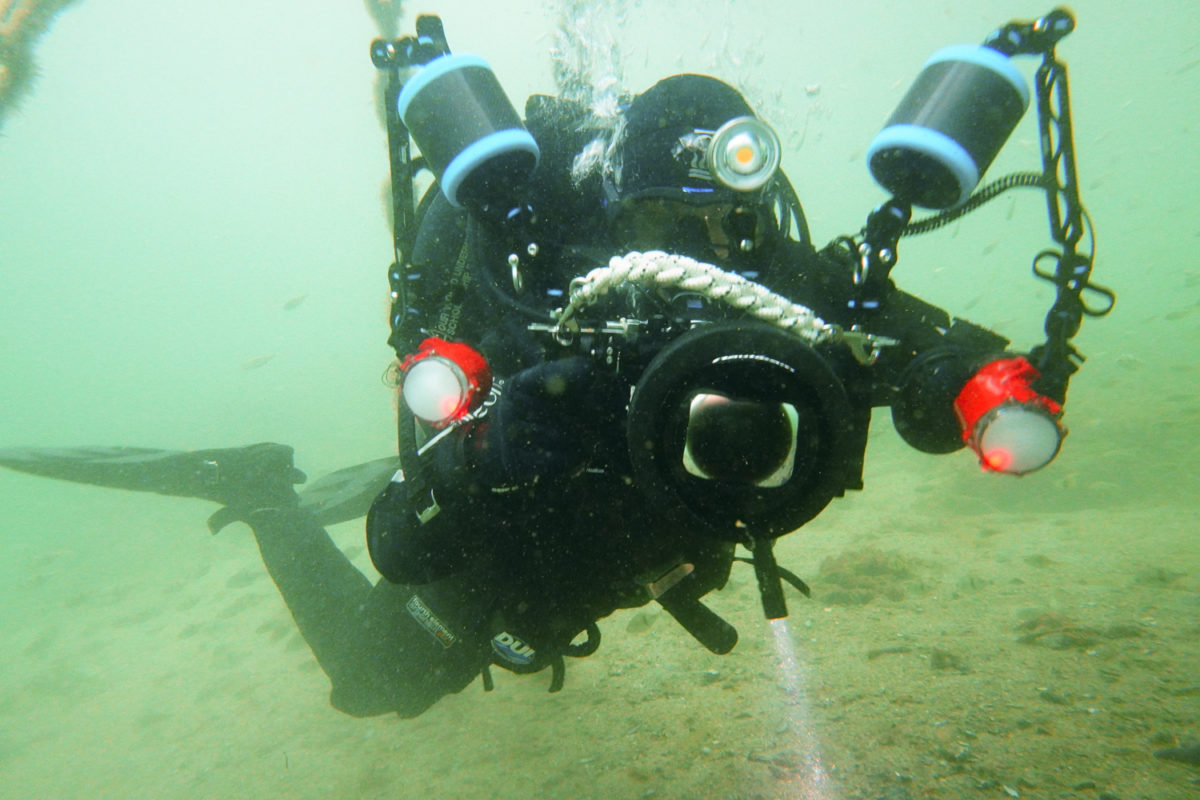
After the jam-packed time in British Columbia, I then flew to breath-taking Alaska, where I was going to spend 3 weeks at the Alaska Sealife Center in Seward.
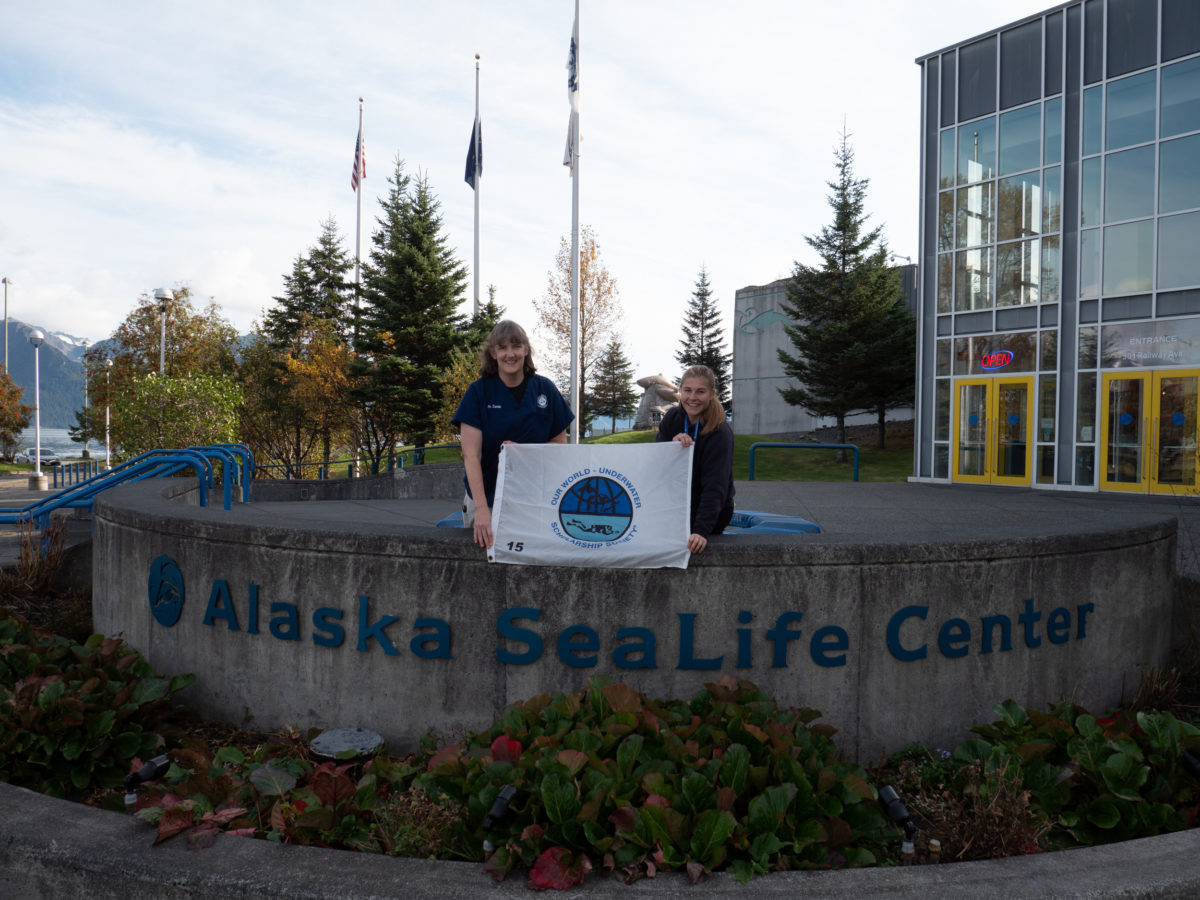
Here, I assisted the centre´s head vet, Dr Carrie Goertz, in the pre-transport acclimation of two Sea Otters, who had been rescued and rehabilitated in the ASLC last year. Because they were rescued as young pups, and haven´t had their mother to teach them vital strategies for feeding in the wild, they, unfortunately, can´t be released back into the wild, so they will find their new forever home in an Aquarium in Europe. To make this long journey as stress-free as possible for them, we worked towards familiarising them with their Transport boxes and other transport-related stimuli, and I monitored their stress level by recording the Body Core temperature changes which were picked up by a receiver that receives the signals of temperature-sensitive radio-transmitters that are implanted into the otter´s peritoneal cavity.
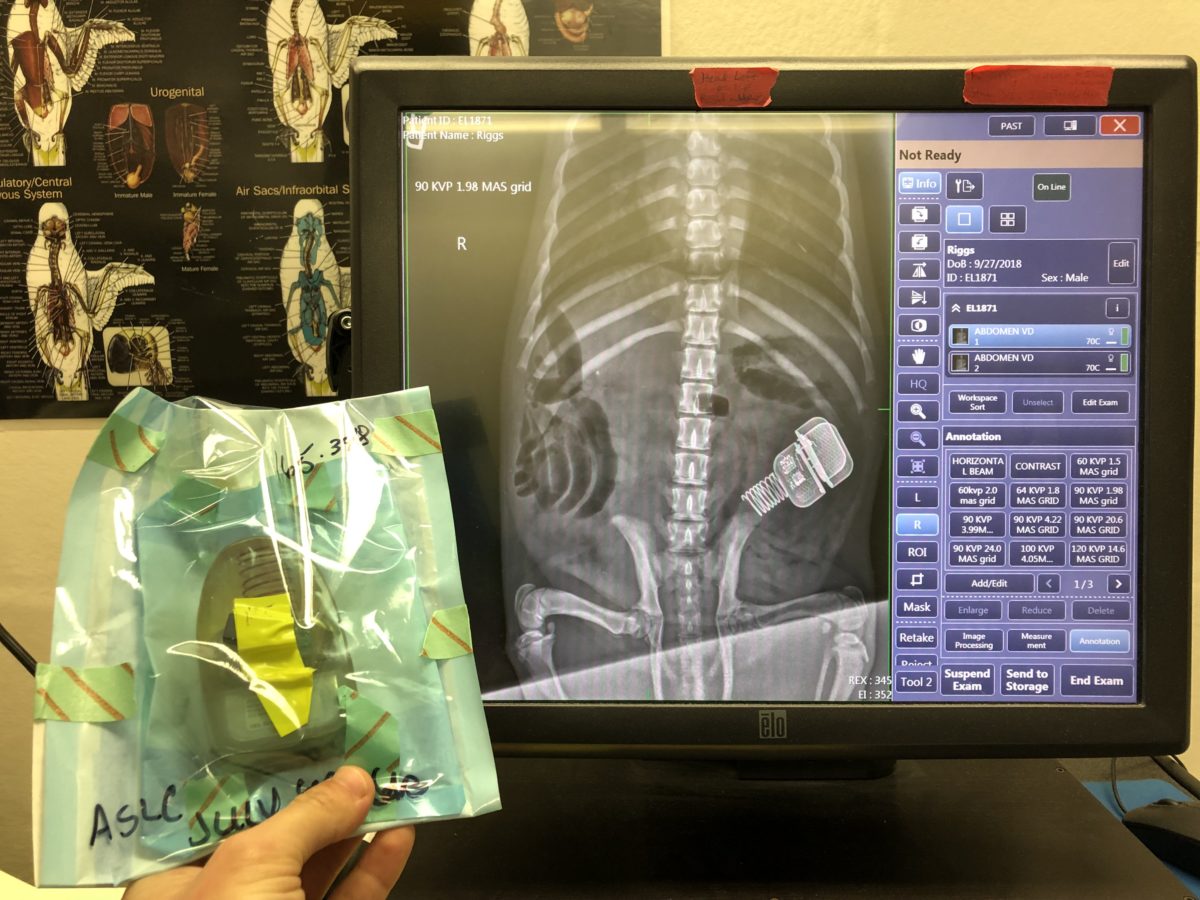
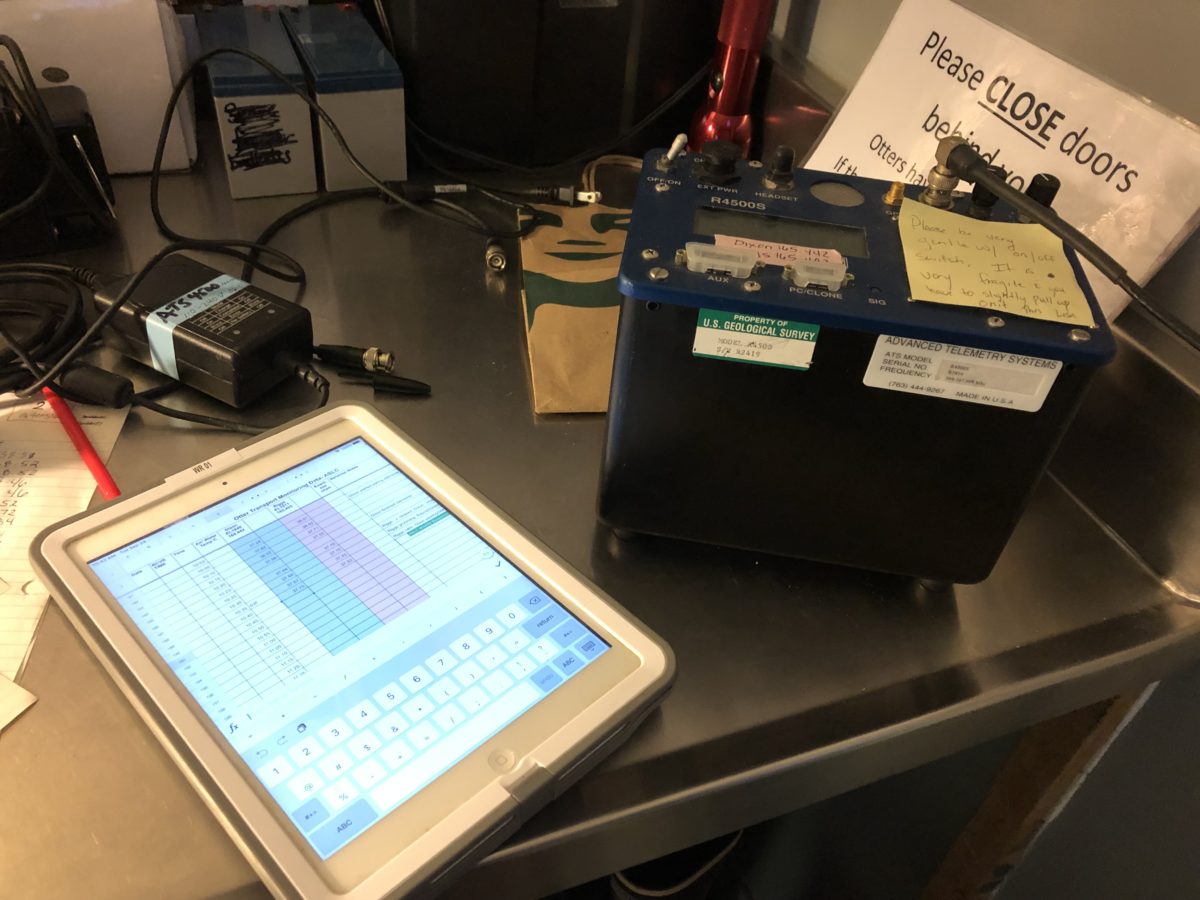
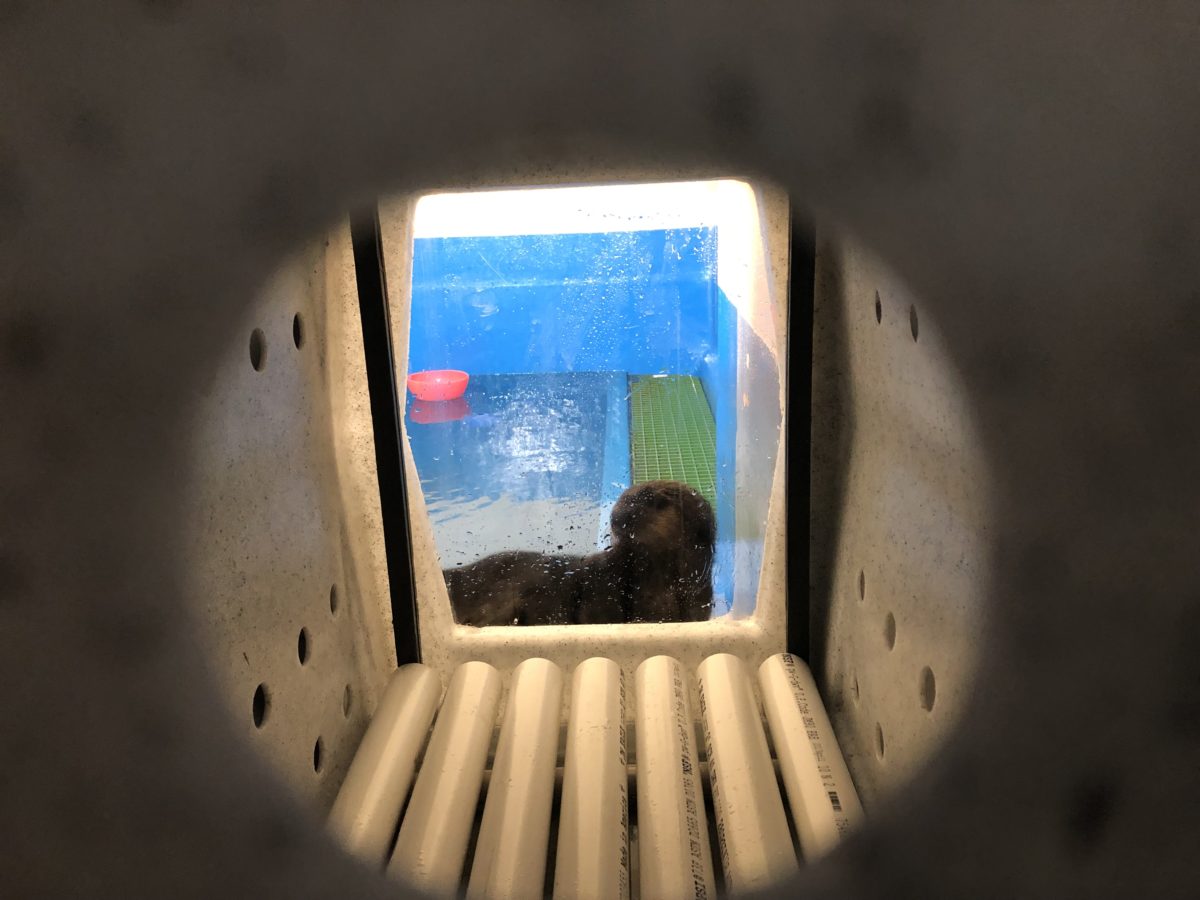
We started with short trial periods of an hour, and slowly lengthened the time out to 9 hours. Through these trials, we were able to recognize critical changes in their behaviours as well and could find solutions like giving them enrichment through offering Clamsicles (Iceblocks with Clams in them), or spraying a little water to encourage them to groom themselves, which is a critically important behaviour to keep their fur waterproof and thus their body temperature stable. This is because Sea otters, unlike other marine mammals, don´t have a thick blubber layer, and therefore primarily rely on a well-cared-for fur coat, with the many fine hairs woven together trapping air close to the body, to thermoregulate efficiently. The otters showed quick progress in their acclimation and I am convinced that they are well prepared for their travels.
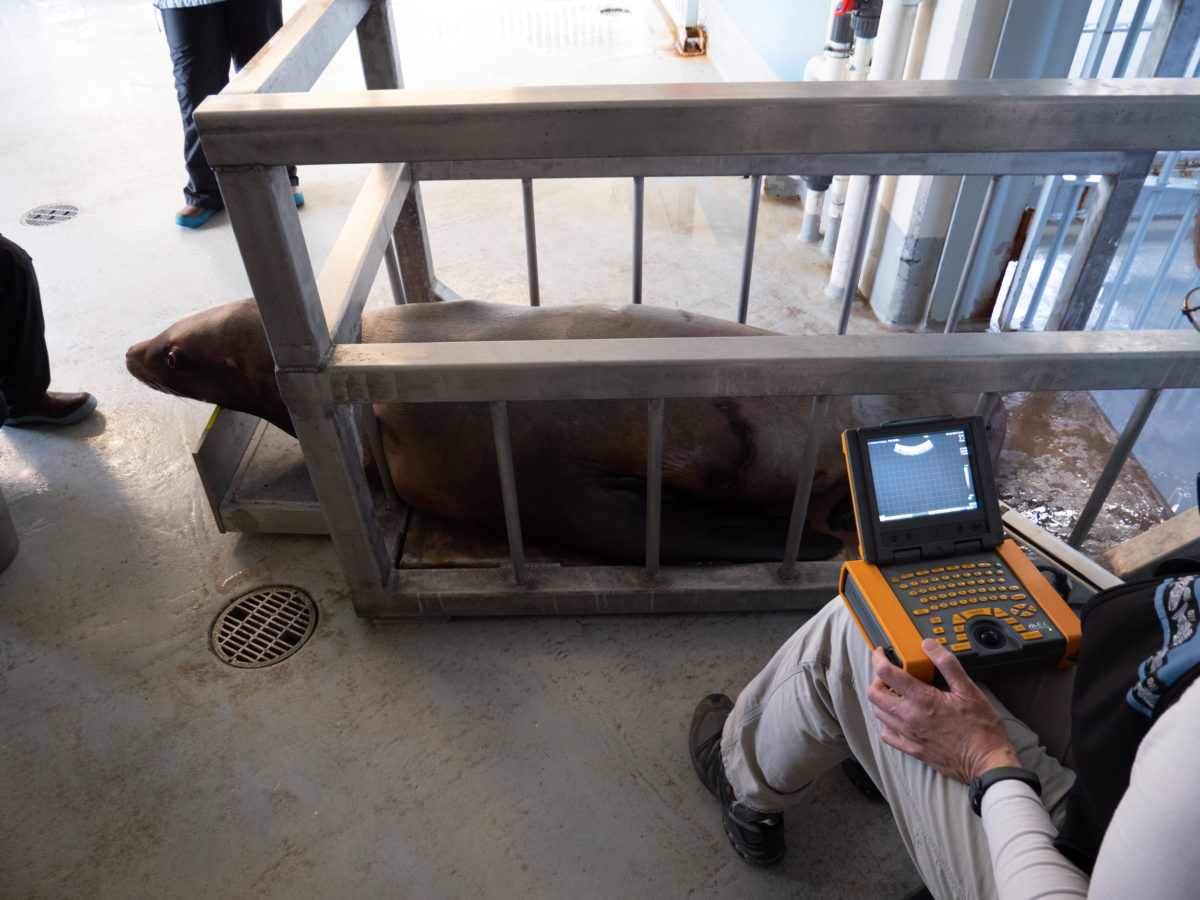
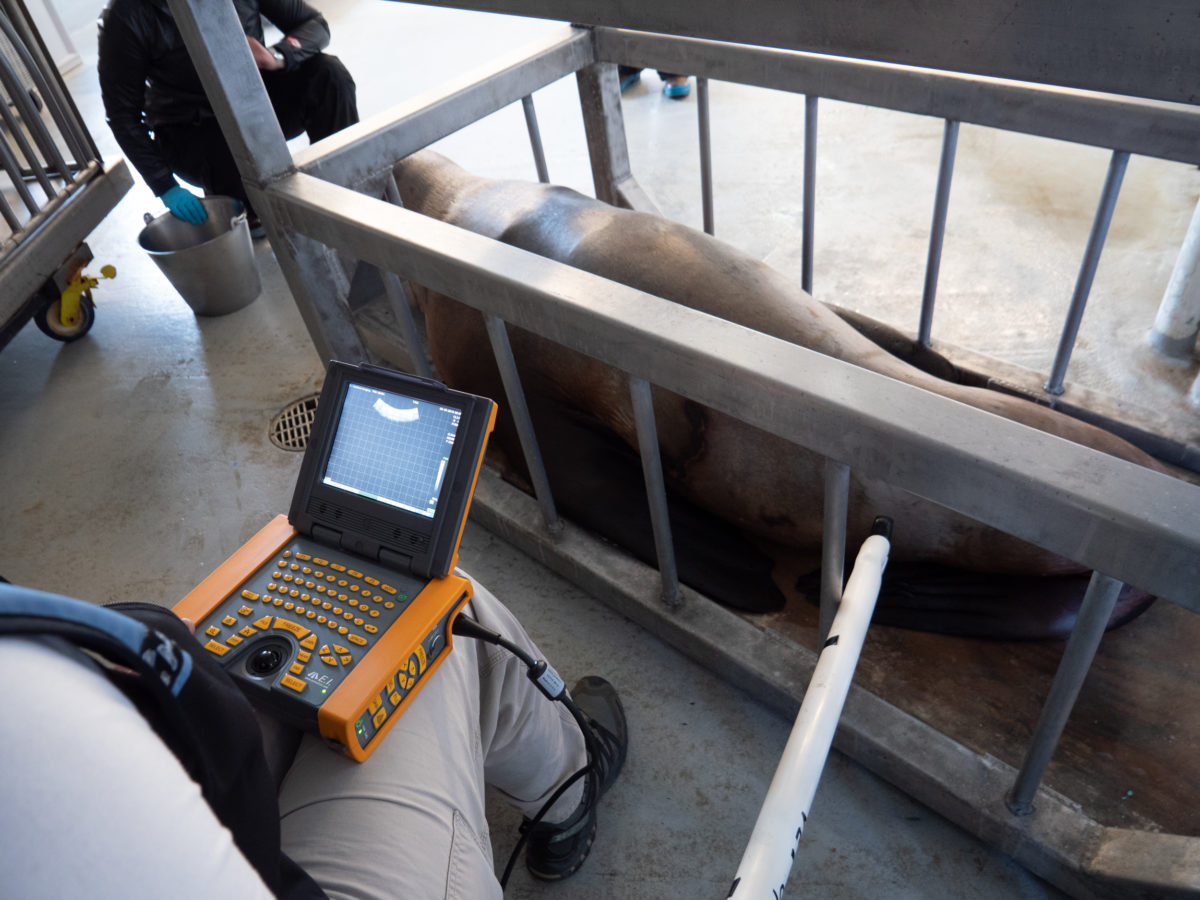
Additionally, I helped the ASLC´s dive team with the cleaning and maintenance of the Stellar Sealion and Ice Seal habitats, providing the Ice Seal with a great enrichment by him trying to sneak up on us divers or bite our fins. I also got to dive in Open Water in Resurrection Bay as well: a shore dive on the remains of the old train tracks which got struck by the Great Alaskan earthquake in 1964, with about half a meter of visibility, making for an interesting dive, and another dive from a boat further out in the Bay, where we luckily found significantly better visibility. I found myself in the most beautiful underwater landscape here surrounded by hundreds of Rockfish, Plumose anemones, Kelp and Northern Sea Nettles.
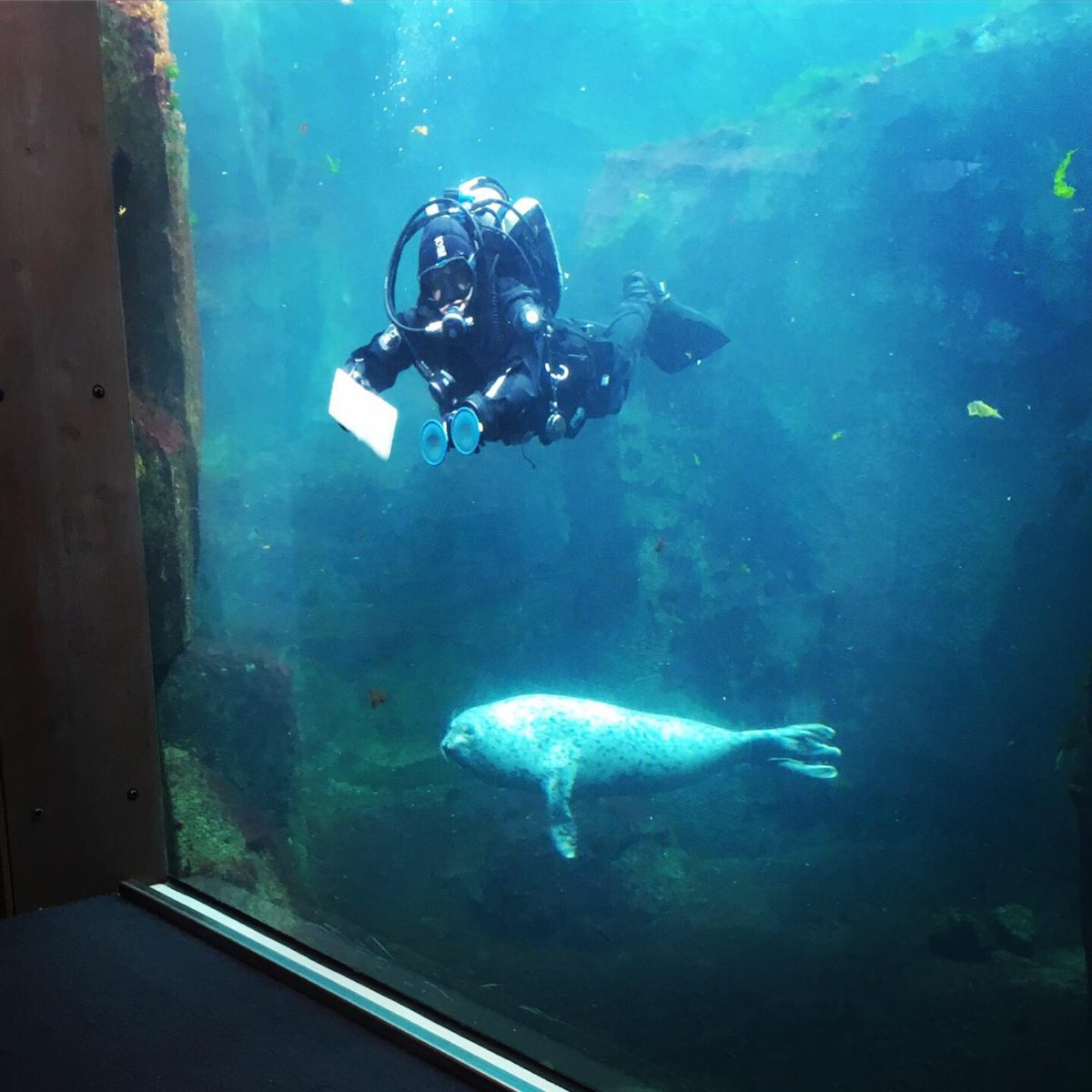
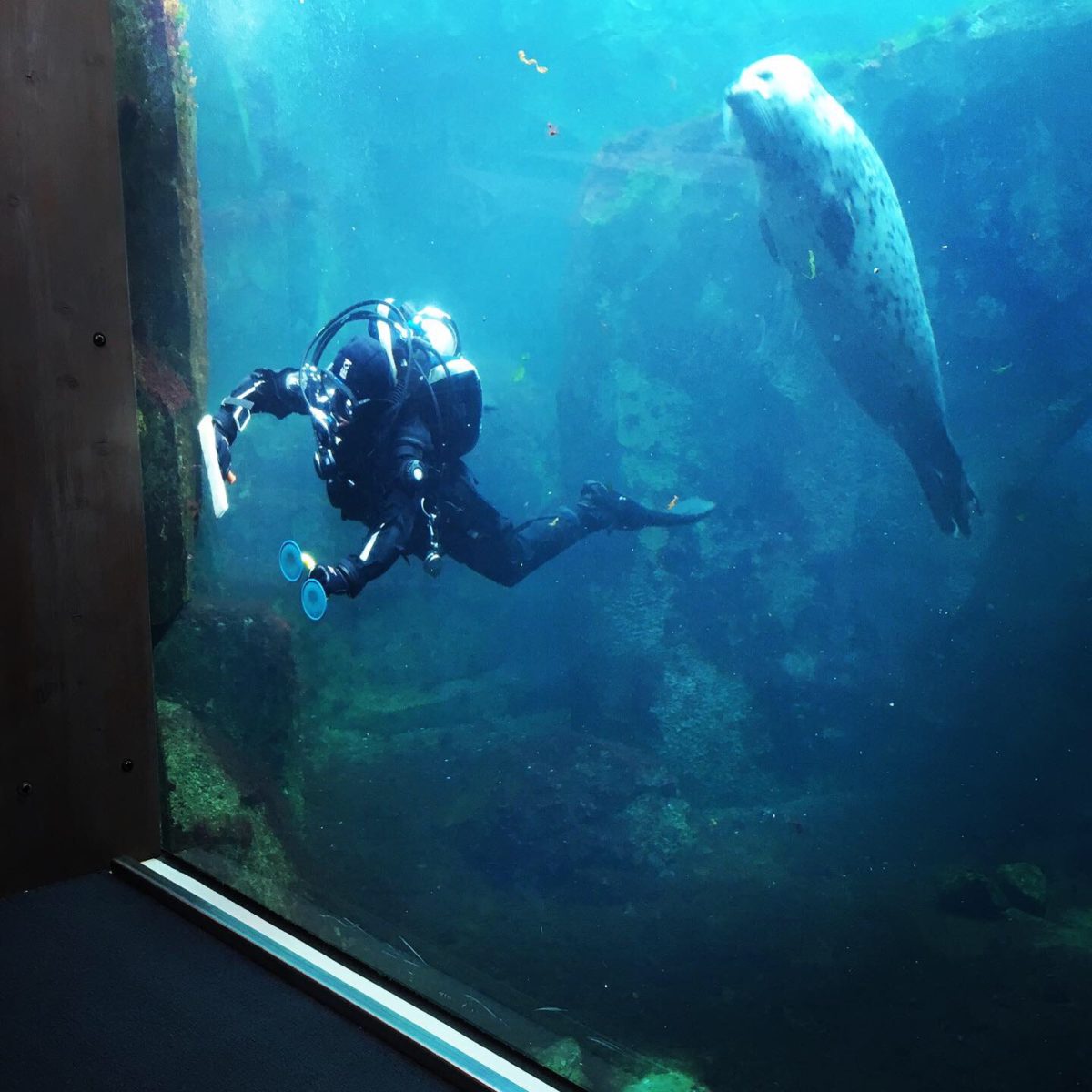
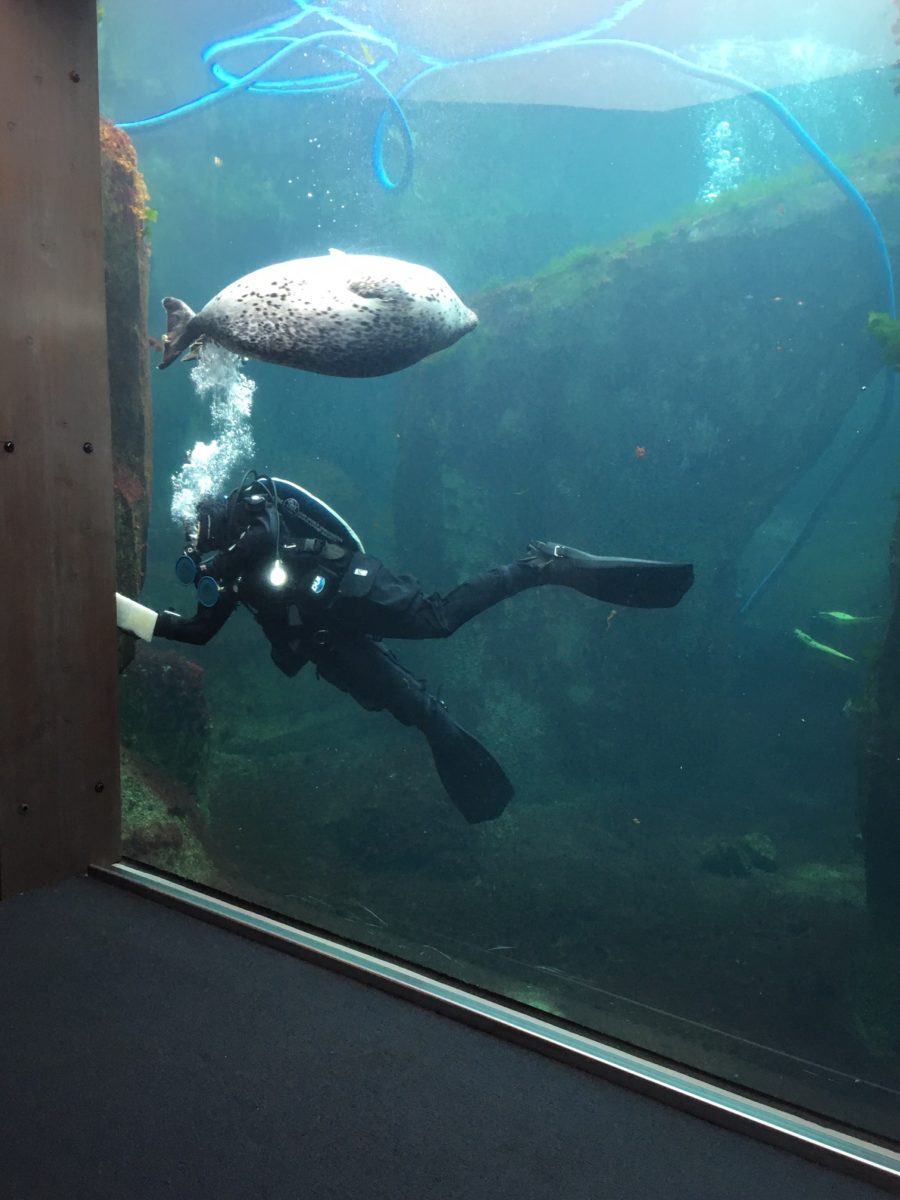
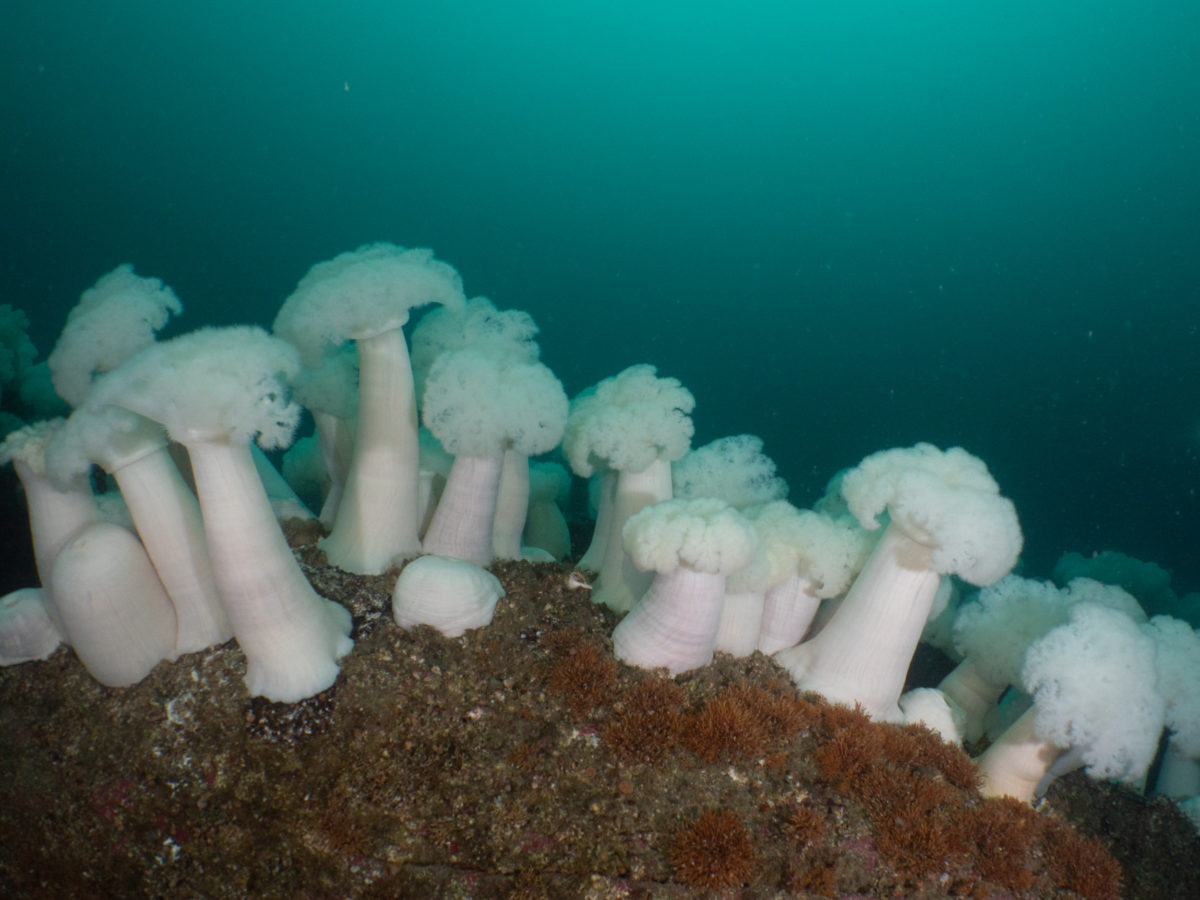
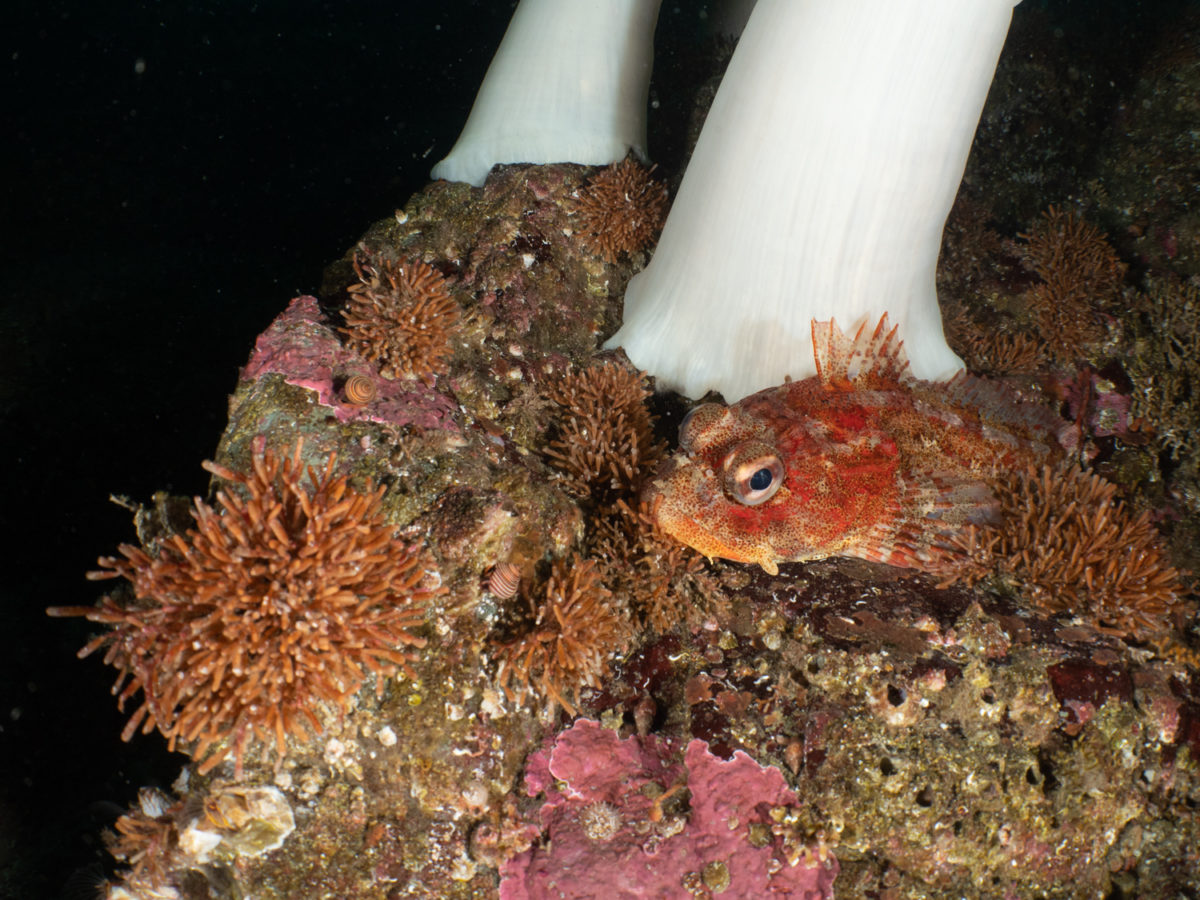
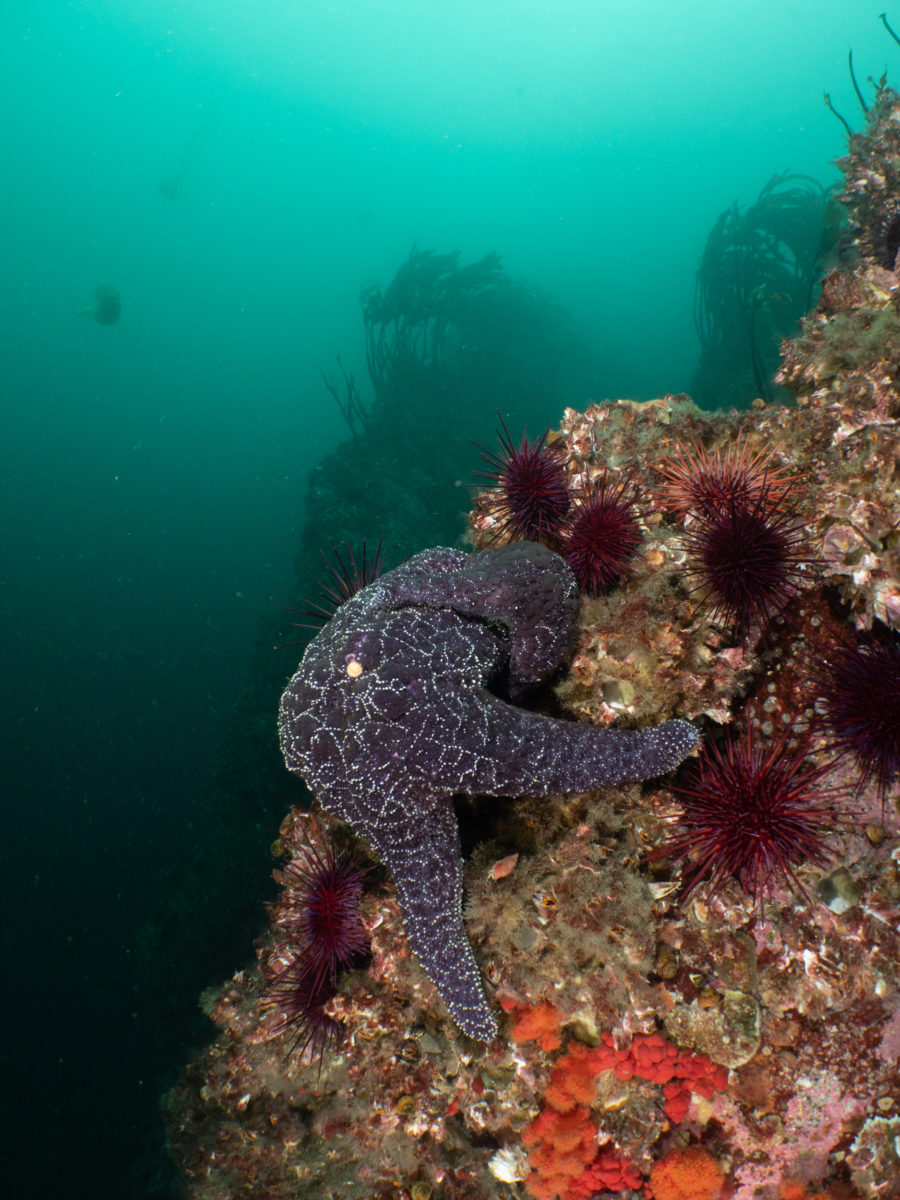
Back in Vancouver then, I participated in the 2019 Diving for Science Symposium of the American and Canadian Academy of Underwater Sciences, to learn more about a variety of Sciences that Diving can be a tool in, and it was an invaluable opportunity to get to know Diving Safety Officers and Underwater Scientists from different parts of the USA, Canada, and other parts of the world.
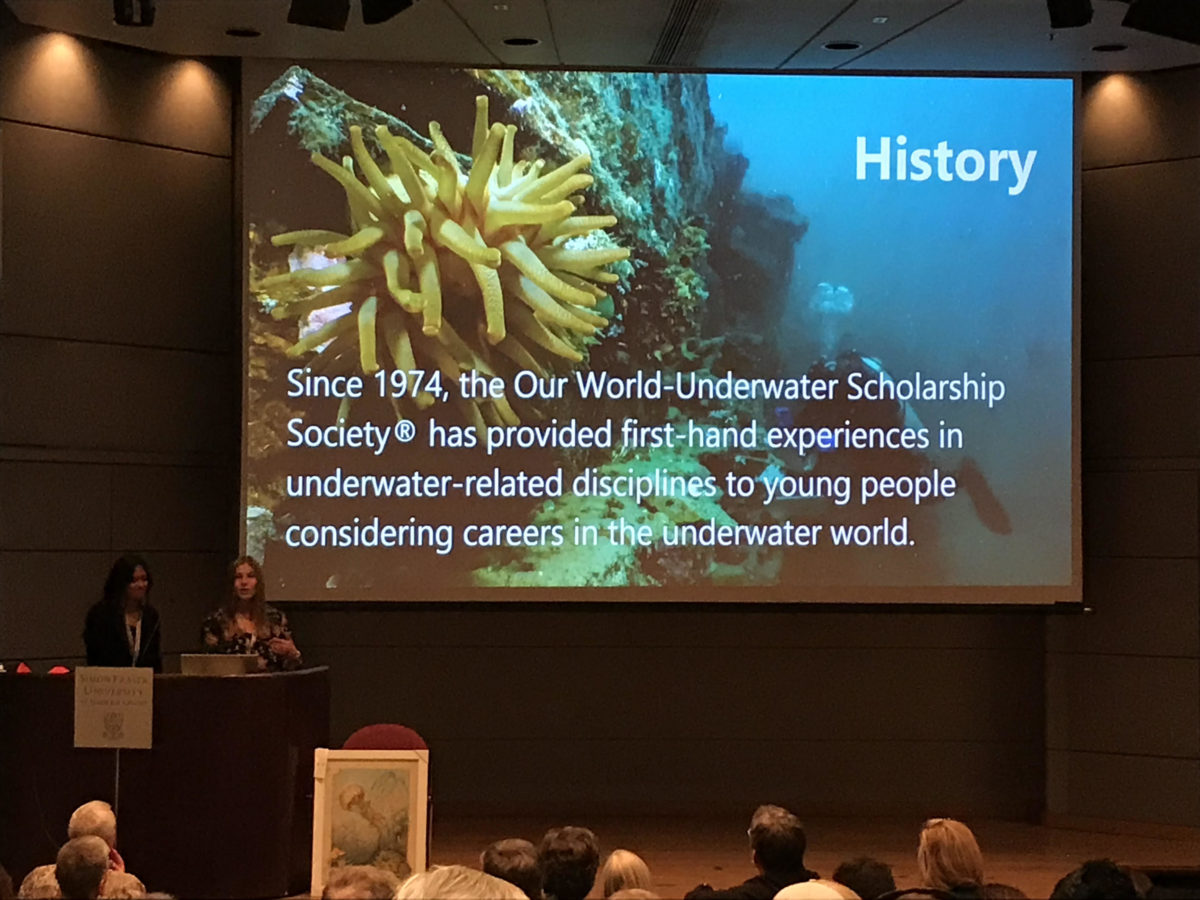
The North American Rolex Scholar Neha and I also gave a presentation about the Our World-Underwater Scholarship Society, and were able to catch up with the 2019 AAUS OWUSS Mitchel Scientific Diving Research Intern Elizabeth Hasan as well as many other people who are involved in the Our World-Underwater Scholarship Society.
